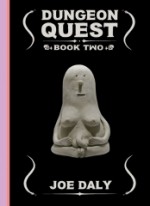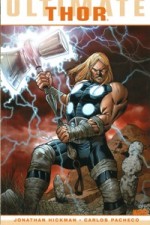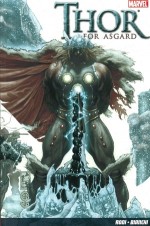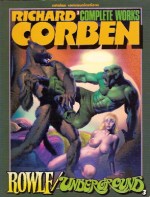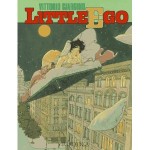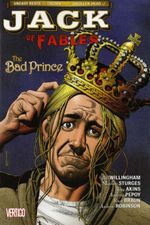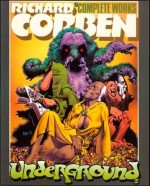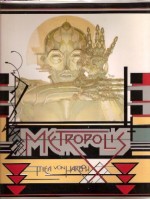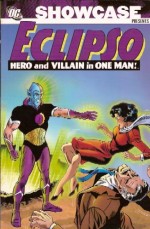
By Bob Haney, Lee Elias, Alex Toth & various (DC Comics)
ISBN: 978-1-4012-2315-1
Although it’s generally accepted that everybody loves a good villain they seldom permit them the opportunity of starring in their own series (except perhaps in British comics, where for decades the most bizarre and outrageous rogues such as Charlie Peace, Spring-Heeled Jack, Dick Turpin, Von Hoffman or The Dwarf were seen as far more interesting than mere lawmen).
However when America went superhero crazy in the 1960s (even before the Batman TV show sent the entire world into a wild and garish “High Camp†frenzy) DC converted all of its anthology titles into character-driven vehicles and long-running paranormal investigator Mark Merlin suddenly found himself sharing the cover spot with a costumed but very different kind of co-star.
Breathing new life into the hallowed Dr. Jekyll/Mr. Hyde concept, Bob Haney and Lee Elias debuted ‘Eclipso, The Genius Who Fought Himself’ in House of Secrets #61, cover-dated July-August 1963, the saga of solar scientist Bruce Gordon who was cursed to become host to a timeless Evil.
Whilst observing a solar eclipse on tropical Diablo Island, Gordon was attacked and wounded by a crazed witchdoctor named Mophir, wielding a black diamond. As a result whenever an eclipse occurred Gordon’s body was possessed by a demonic, destructive alter ego with incredible powers and malign hyper-intellect. The remainder of the first instalment showed how the intangible interloper destroyed Gordon’s greatest achievement: a futuristic solar-powered city.
The format established, Gordon, his fiancé Mona Bennett and her father, who was also Gordon’s mentor, pursued and battled the incredible Eclipso and his increasingly astounding schemes. At least he ha a handy weakness: exposure to sudden bright lights would propel him back to his cage within Bruce Gordon…
‘Duel of the Divided Man’ saw the helpless scientist attempting to thwart the uncontrollable transformations by submerging to the bottom of the Ocean and exiling himself to space – to no effect, whilst in ‘Eclipso’s Amazing Ally!’, illustrated by the legendary Alex Toth, the malignant presence manifests when an artificial eclipse and lab accident frees him entirely from Gordon’s body. Against the backdrop of a South American war Gordon and Professor Bennett struggled to contain the liberated horror but all was not as it seemed…
Issue #64 ‘Hideout on Fear Island’ saw Gordon, Mona and Bennett hijacked to a Caribbean nation inundated by giant plants for an incredible clash with giant robots and Nazi scientists. Naturally when Eclipso broke out things went from bad to worse…
‘The Man Who Destroyed Eclipso’ had the Photonic Fiend kidnap Mona before a deranged physicist actually separated Eclipso and Gordon in a wild scheme to steal a nuclear missile, whilst the threat of a terrifying alien omnivore forced heroes and villain to temporarily join forces in ‘The Two Faces of Doom!’
‘Challenge of the Split-Man!’ found Gordon and Eclipso once more at odds as the desperate scientist returned to Mophir’s lair in search of a cure before inexplicably following the liberated villain to a robot factory in Scotland.
Veteran cartoonist Jack Sparling took over the artist’s role with #68 wherein ‘Eclipso’s Deadly Doubles!’ revealed how Gordon’s latest attempt to effect a cure only multiplied his problems, after which ‘Wanted: Eclipso Dead or Alive!’ found the beleaguered scientist hired by Scotland Yard to capture himself – or at least his wicked and still secret other self…
‘Bruce Gordon, Eclipso’s Ally!’ returned the long suffering trio to Latin America where an accident robbed Gordon of his memory – but not his curse, leading to the most ironic alliance in comics, ‘The Trial of Eclipso’ had the periodically freed felon finally captured by the police and threatening to expose Gordon’s dark secret and ‘The Moonstone People’ stranded the Bennetts, Gordon and Eclipso on a lost island populated by scientists who hadn’t aged since their own arrival in 1612…
Even such a talented writer as Bob Haney occasionally strained at the restrictions of writing a fresh story for a villainous protagonist under Comics Code Restrictions and the later tales became increasingly more outlandish after ‘Eclipso Battles the Sea Titan’ wherein a subsea monster threatened not just the surface world but also Eclipso’s ultimate refuge – Bruce Gordon’s body…
Another attempt to expel or eradicate the horror inside accidentally created a far more dangerous enemy in ‘The Negative Eclipso’ after which a criminal syndicate, fed up with the Photonic Fury’s disruption of their operations, decreed ‘Eclipso Must Die!’
It had to happen – and did – when Mark Merlin (in his superhero persona of Prince Ra-Man) met his House of Secrets stable-mate in the book-length thriller ‘Helio, the Sun Demon!’ (#76, with the concluding second chapter drawn by the inimitable Bernard Baily) wherein Eclipso created a fearsome, fiery solar slave and the Bennetts teamed with the enigmatic super-sorcerer to free Bruce and save the world from flaming destruction.
All-out fantasy subsumed suspense in the strip’s dying days with aliens and creatures abounding, such as ‘The Moon Creatures’ which Eclipso grew from lunar dust to do his wicked bidding or the hidden treasure of Stonehenge that transformed him into a ‘Monster Eclipso’.
Issue #79 featured a return match for Prince Ra-Man in ‘The Master of Yesterday and Tomorrow!’ with Baily again pitching in to tackle an extended epic wherein Eclipso got his scurrilous hands on a selection of time-bending trinkets, whilst #80 (October 1966) ended the series with no fanfare, no warning and no ultimate resolution as ‘The Giant Eclipso!’ pitted the fade-away fiend against mutants, cops and his own colossal doppelganger.
Not everything old is gold and this quirky, exceedingly eccentric collection of comics thrillers certainly won’t appeal to everyone. However there is a gloriously outré charm and fanciful delight in these silly but absorbing sagas if you’re of an open minded mien, and the art of Elias, Toth, Sparling and Baily has never looked more vibrant or effective than in this crisp and splendid black and white collection.
Not for him or them then, but perhaps this book is for you…
© 1963-1966, 2009 DC Comics. All Rights Reserved.
